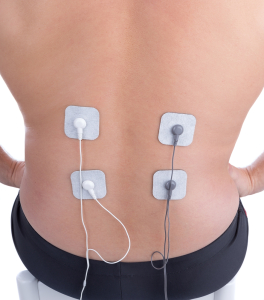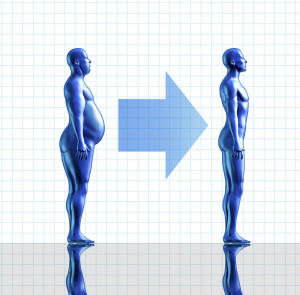Introduction
In general, treatment of low back pain will vary depending on what the underlying cause of the acute low back pain is. As a matter of fact, most of the back pains are harmless and self-limiting, but extremely annoying to the patient. For one thing, in the acute phase icing the back may give relief. Surprisingly, some patients have perhaps a weaker connective tissue. Notably, chiropractors, physiotherapist and specialists in Rehabilitative medicine (physiatrists) have all their place in the treatment of low back pain. Certainly electroacupuncture is a useful technique to use, once it has been established by your care giver that your back pain is harmless and consists of reoccurring muscle spasms. It is important to realize that once the treatments have given you relieve it is imperative that you engage in a regular muscle strengthening program like a regular gym program.
Chiropractic adjustments or physiotherapy treatments
Another key point is that when you are more prone to recurrent acute lower back problems you may benefit from a few chiropractic manipulative treatments. For one thing, minor malalignments of the facet joints can be treated very quickly and effectively this way. But another key point is that some patients are very sensitive in their back, perhaps because they lean more towards developing fibromyalgia or myofascial pain when they have a back pain.
It must be remembered that these patients will find out that they do better with physiotherapy treatment modalities and they should be sent there. On the positive side, once the patient knows what works for them, they usually gravitate into the right treatment modality. Generally speaking, it would be a mistake to recommend one therapy over another. In addition, some patients also seem to respond best to a few acupuncture treatments combined with stretching exercises and subsequent reactivation exercises.
Reactivation program
To emphasize, if this is what it takes to overcome the acute back pain, go for it! In other words, after an initial one or two weeks of passive treatment modality such as chiropractic, physiotherapy or electroacupuncture treatments (see image below) it is important in all cases to switch over to a more active reactivation program. As has been noted, this consists of active exercises and stretching exercises as explained above.
All things considered, apart from modalities by therapists that help the patient’s back pain we surely need to be aware of postural problems. To clarify, an obese patient for instance will develop a hyper-lordosis in the lower lumbar spine, which will cause recurrent lower back problems. Truly, only will power and weight loss will help normalize this on the long term (see image).
As can be seen, if reactivation of the lower back is neglected, the patient gets muscle atrophy from disuse and this sets the patient up to get a chronic back pain, post-traumatic fibromyalgia or myofascial pain syndromes.
In summary, the following lists the specific therapeutic recommendations for the more common underlying causes of back pain.
Treatment modalities for lower back pain
Facet joint disease (lower back strain)
As shown above chiropractic or physiotherapy treatments initially followed by active exercises.
Degenerative disc and facet joint disease
For the most part, anti-inflammatory medication, physiotherapy treatments and swimming. Equally important, in end stage intractable disease, if confined to one or two levels, this may respond to fusion surgery by a spinal surgeon.
Spondyloarthropathies
In a word, treat underlying disease and use antiinflammatories; ultimately, rheumatologist referral for more specific therapy.
Osteoporosis
All things considered, treat underlying hormone disbalance, if present; regular walking and swimming; all in all, avoid alcohol, caffeine, stop smoking; use calcium, bisphosphonates, vitamin D and vitamin K2 to build up bone.
Scoliosis
Bracing during growth spurts; good posture; strengthening exercises; in severe cases corrective surgery with Harrington rods by spinal surgeon.
Spinal stenosis
Decompression surgery for severe cases to free spinal cord and nerve roots.
Posttraumatic fibromyalgia
Low dose antidepressants, cognitive therapy, mild physical exercises
Disc herniation with or without sciatica
Only in 3% of all back pain is surgery indicated; many cases heal on their own
Spondylolisthesis and other congenital malformations
Grade I to IIIA do not need surgery, stage IIIB and IV need fusion with instrumentation by spinal surgeon
Bone metastases
Underlying cancer needs treatment, often chemotherapy required
Spondyloarthropathies
The underlying disease such as Crohn’s disease, ulcerative colitis, psoriasis or ankylosing spondylitis that has lead to this inflammatory disease of the spinal column needs to be treated. Sulfasalazine in the case of Crohn’s disease and ulcerative colitis might also help the spondyloarthropathy. The COX-2 inhibitory drug (brand name: Celebrex) is also useful, as are the regular anti-inflammatories. Keep an eye on side-effects of the COX-2 inhibitory medications, which are easier on the stomach, as one of these drugs (VIOXX) was pulled from the market in October of 2004. The VIOXX link explains this story in detail.
Otherwise reactivation, physical rehabilitation programs and postural improvements are helpful.
References
1. ABC of rheumatology, second edition, edited by Michael L. Snaith , M.D., BMJ Books, 1999.
2. The Merck Manual, 7th edition, by M. H. Beers et al., Whitehouse Station, N.J., 1999. Chapter 52.
3. The Merck Manual, 7th edition, by M. H. Beers et al., Whitehouse Station, N.J., 1999. Chapter 275,p.2429.
4. HA King Orthop Clin North Am 1988 Apr;19(2):247-255.
5. HA King Orthop Clin North Am 1999 Jul;30(3):467-474, ix.
6. The Merck Manual, 7th edition, by M. H. Beers et al., Whitehouse Station, N.J., 1999. Chapter 59.
7. JA Smith Orthop Clin North Am Jul 1999; 30(3): 487-499.
8. The Merck Manual, 7th edition, by M. H. Beers et al., Whitehouse Station, N.J., 1999. Chapter 56, p. 469.
9. Wheeless’ Textbook of Orthopaedics: http://www.wheelessonline.com/ortho/arthritis
10. Goldman: Cecil Textbook of Medicine, 21st ed.(©2000)W.B.Saunders
11. Ferri: Ferri’s Clinical Advisor: Instant Diagnosis and Treatment, 2004 ed., Copyright © 2004 Mosby, Inc.
12. Rakel: Conn’s Current Therapy 2004, 56th ed., Copyright © 2004 Elsevier
13. Suzanne Somers: “Breakthrough” Eight Steps to Wellness– Life-altering Secrets from Today’s Cutting-edge Doctors”, Crown Publishers, 2008








